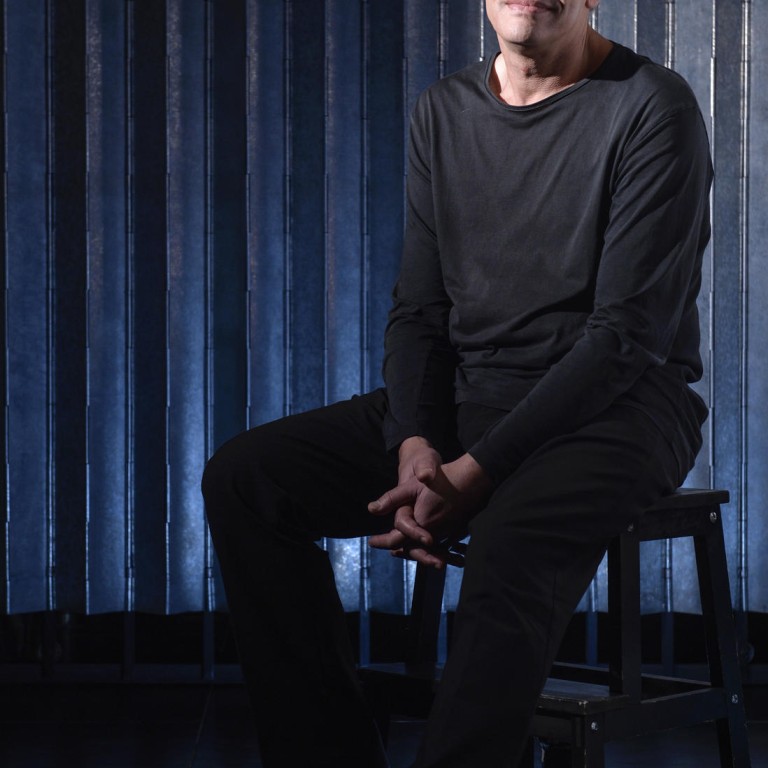
Abdellatif Kechiche is unapologetic about his much-criticised lesbian love story
His latest film has met with a barrage of criticism for its graphic and lengthy lesbian sex scenes, but far from being apologetic, Abdellatif Kechiche tells Edmund Lee he plans to release an extended cut
IT'S A SIGN THAT a filmmaker has done something right when he wins the Palme d'Or at the Cannes Film Festival - and few of the many ensuing disputes about his film concern its merits. That's what 53-year-old Franco-Tunisian director Abdellatif Kechiche achieved with his in 2013.
Rather, the main controversies have involved the critically acclaimed three-hour lesbian romance being spiced with graphic and unusually lengthy sex scenes.
"The most recurrent question I've been asked is about the love scenes. I hadn't expected that," he says on a recent visit for the Hong Kong French Film Festival.
A devastatingly intense chronicle of a love affair between high school student Adèle (Adèle Exarchopoulos) and aspiring visual artist Emma (Léa Seydoux), Kechiche's Lille-set character study is loosely based on Julie Maroh's celebrated graphic novel of the same title. But the director confirms during our interview that he made no contact with her throughout the filmmaking process.
A self-professed feminist and lesbian, Maroh drew first blood with Blue is the 's persistent negative publicity when, back in May, she publicly bemoaned the lack of lesbians involved in the film's production. She also compared the resulting work - which also came away with the Fipresci Prize at Cannes - to porn.
Then there are leading ladies Exarchopoulos and Seydoux, who were jointly awarded the Palme d'Or - an honour previously reserved for film directors - with Kechiche. They famously complained in a press interview four months later that they were subjected to "horrible" treatment on the set, which allegedly included an arduous 10-day shoot for the extended sex scenes, as well as a one-hour continuous take for a break-up scene in which one actress was asked to repeatedly hit the other for real.
Both actresses stated in that September interview that they would never work with the filmmaker again. The younger Exarchopoulos, who just turned 20 in November and whose star turn in was her first major role, has since softened her stance. Kechiche admits that he is no longer on speaking terms with the more established - and older, at 28 - Seydoux.
Considering he threatened to take Seydoux to court for slander in an open letter in late October, I ask Kechiche if that would now be considered the end of the episode for him - or if he may still follow up with legal action. "It's not just with Léa," the softly spoken director says cryptically, before bursting into laughter.
Giving his side of the story, Kechiche sheds more light on his working methods regarding the sex scenes. "When one says it took 10 days to shoot, we have the impression that it's 10 whole days. There were a few [love] scenes in the film, so I had to restart the shoot a few times - there were other dream sequences to film, too. "It's shot over a few days but the actual filming took only about 20 or 30 minutes."
Kechiche also has had a chance to respond to the heated criticisms of his unmistakably voyeuristic representation of the female body, which features frequent close-ups of his actresses' lips, breasts and derrières. "I treat the scenes in this film in the same way as I did in my previous films," he says.
His is, admittedly, a cinematographic strategy that has characterised an oeuvre often revered for its dedication to everyday realism; Kechiche's two recent features, (2007) and 2010's , both made use of hovering, hand-held shots of the body to rather less contentious ends.
"I like filming bodies - especially the female bodies. It's something for which I have no particular explanation. It's a desire, too, because I find it beautiful. I like to film dance - I like to film anything related to the senses and sensuality. When a sculptor or a painter [tackles the body as a subject], very often it's a perception of something which goes beyond the body", he says.
As for the disproportionately big fuss that has been made about his film's frank portrayal of sex, the director is nonchalant. "I believe that it's a question of eras," he says. "When [Georg] WilhelmPabst made the [1929] silent films and , they were banned because of a shot showing a breast.
"And then you have films like Nagisa Oshima's ," Kechiche says, referring to the graphically explicit 1976 Japanese film, which was notorious for its use of real sex. "I thought our era was more modern."
Kechiche is planning to release an extended cut. He says: "There will be a few more scenes, and some scenes will be longer. Originally, I had to limit the film to three hours. Now I feel like there is no reason to limit the length of it."
The director attributes his motivation to revisit the film to "the regret that I left out some scenes that I find very beautiful and I think will add something to the story". He also hopes to make a sequel about his lead character. Given that his film's original French title translates as that sounds like a logical move. "This is a character that interests me a lot," Kechiche says of Exarchopoulos' character. "I'd like to develop her into her adult life."
opens on January 2
